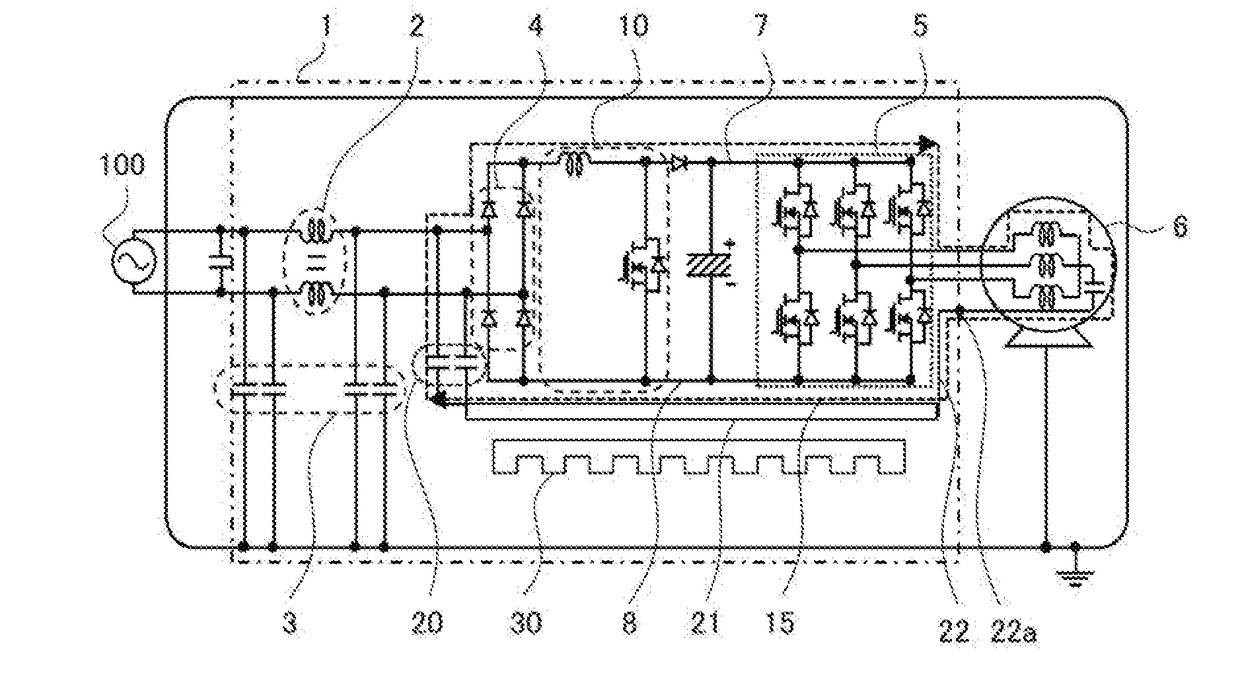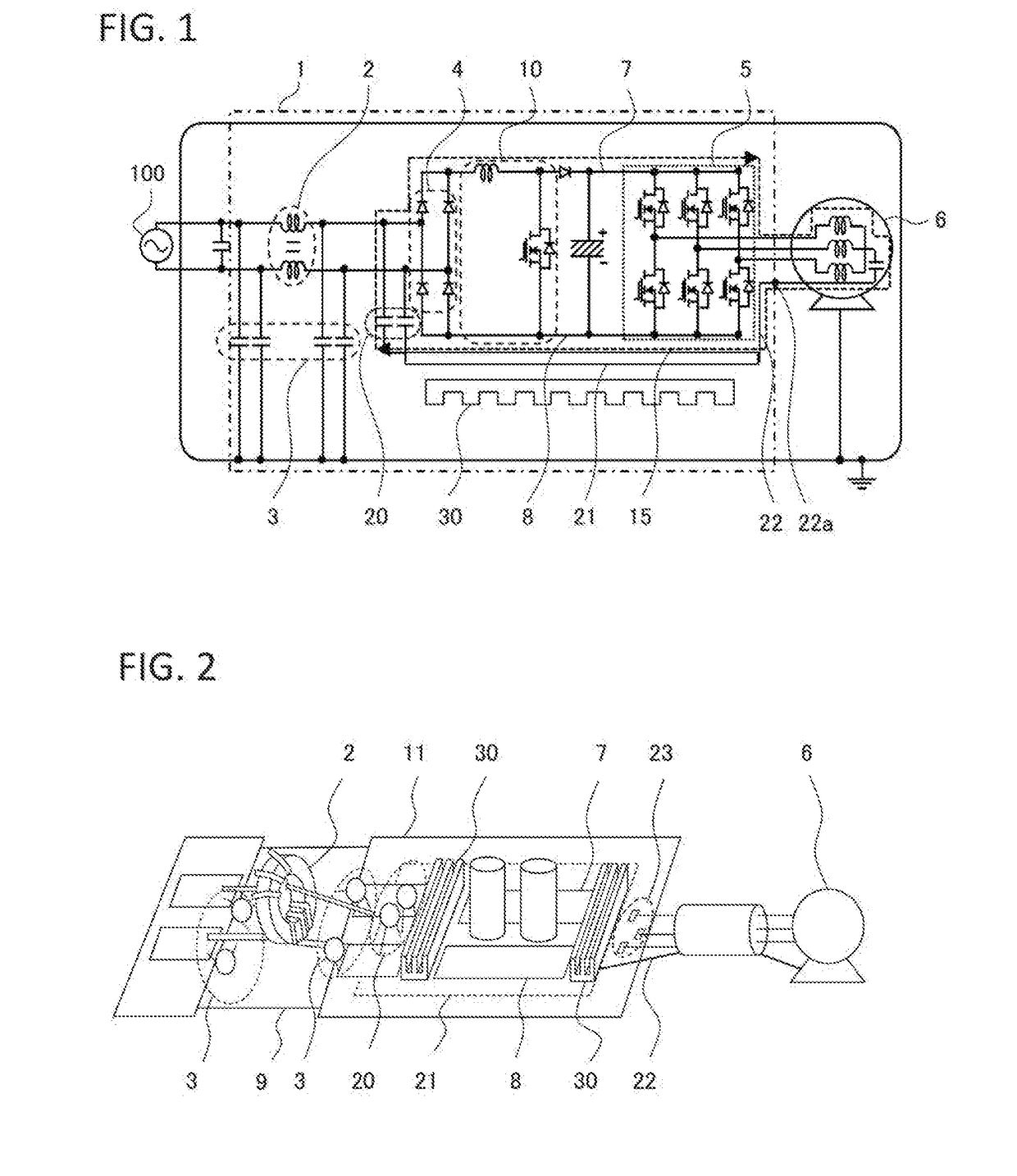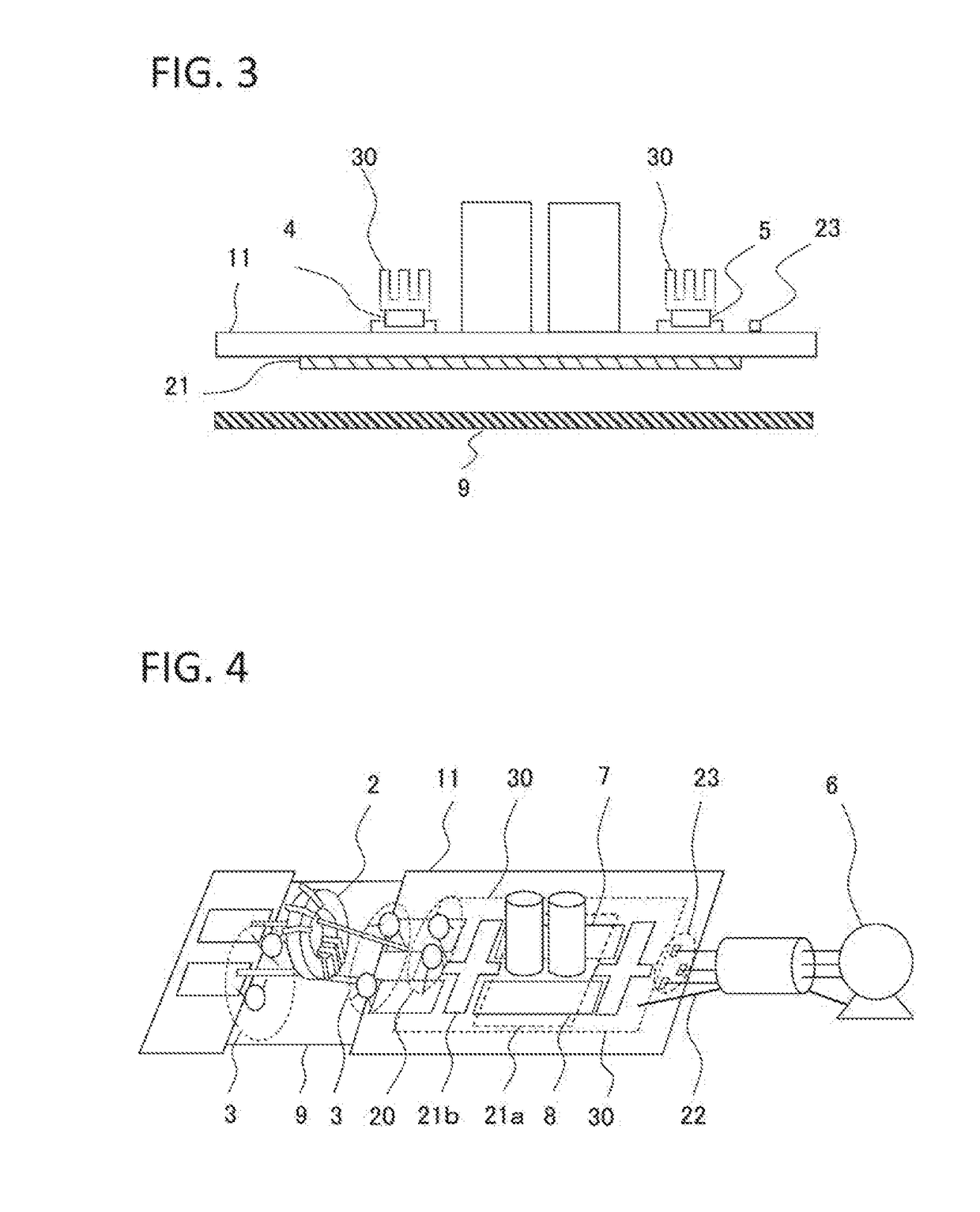Power circuit device
a power circuit and circuit technology, applied in the direction of printed circuit aspects, cross-talk/noise/interference reduction, dc-ac conversion without reversal, etc., can solve the problems of electrical noise generated by electronic equipment, noise transmission, and other devices to malfunction, so as to achieve the effect of restricting the flow of noise from the load into the system power supply
- Summary
- Abstract
- Description
- Claims
- Application Information
AI Technical Summary
Benefits of technology
Problems solved by technology
Method used
Image
Examples
first embodiment
[0034]Hereafter, a first embodiment of the invention will be described.
[0035]FIG. 1 is a circuit diagram showing a power circuit device 1 according to the first embodiment of the invention, wherein a system power supply 100 and load 6 connected to the power circuit device 1 are included in FIG. 1. FIG. 2 is a perspective view showing the power circuit device 1 according to the first embodiment of the invention, wherein the system power supply 100 is not shown. FIG. 3 is a side view of a rectifier circuit 4, step-up circuit 10, and inverter 5 portion of the power circuit device 1 according to the first embodiment of the invention.
[0036]As shown in FIG. 1, a grounding capacitor 3 is attached to either end of a common mode coil 2. An upper limit value of capacitance of the grounding capacitor 3, taking leakage current into account, is in the region of 4,700 pF. One common mode coil 2 is connected to the system-power supply 100, while another is connected to the rectifier circuit 4. The...
second embodiment
[0045]Also, when using a part with height, such as an electrolytic capacitor, and disposing the rectifier circuit 4 and inverter 5 on a back surface side of the printed circuit board 11, that is, on the side opposite the surface on which the electrolytic capacitor is provided, a configuration may be such that the conductive plate 21 is configured of a first conductive plate 21a, disposed on the same side as the heatsink 30 with respect to the printed circuit board 11, and a second conductive plate 21b, disposed on the opposite side to the heatsink 30 with respect to the printed circuit board 11, and the first conductive plate 21a and second conductive plate 21b are connected by a via hole 31, as shown in FIG. 4 and FIG. 5.
[0046]According to this configuration, the noise loop 15 can be formed even when using a part with height, such as an electrolytic capacitor, and disposing the rectifier circuit 4 and inverter 5 on the side of the printed circuit board 11 opposite the surface on wh...
third embodiment
[0047]Also, a sandwich structure wherein the first wire 7 and second wire 8 are disposed so as to sandwich the conductive plate 21 from either side, as in FIG. 6, may be adopted. In this case too, the positive polarity side of the rectifier circuit 4 and the first wire 7 are connected, the negative polarity side of the rectifier circuit 4 and the second wire 8 are connected, the positive polarity side of the inverter 5 and the first wire 7 are connected, and the negative polarity side of the inverter 5 and the second wire 7 are connected. Furthermore, in the same way, the positive polarity side of the electrolytic capacitor and the first wire 7 are connected, and the negative polarity side of the electrolytic capacitor and the second wire 8 are connected.
[0048]According to this configuration, the noise loop 15 is configured of the inverter 5, an electrical wire connecting the inverter 5 and load 6, the load 6, the floating capacitance of the load 6, the ground wire terminal 22a, the...
PUM
 Login to View More
Login to View More Abstract
Description
Claims
Application Information
 Login to View More
Login to View More - R&D
- Intellectual Property
- Life Sciences
- Materials
- Tech Scout
- Unparalleled Data Quality
- Higher Quality Content
- 60% Fewer Hallucinations
Browse by: Latest US Patents, China's latest patents, Technical Efficacy Thesaurus, Application Domain, Technology Topic, Popular Technical Reports.
© 2025 PatSnap. All rights reserved.Legal|Privacy policy|Modern Slavery Act Transparency Statement|Sitemap|About US| Contact US: help@patsnap.com



